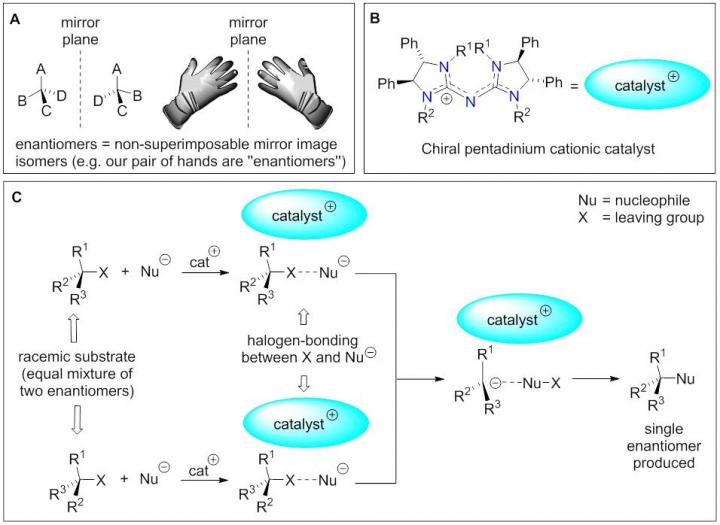NTU and SUTD researchers discover asymmetric chemical reaction with intriguing reaction pathways
SUTD- Richmond Lee, Siu Min Tan, Davin Tan
NTU- Choon-Hong Tan, Xin Zhang, Jingyun Ren
Catalysis is common in many industries such as pharmaceutical, specialty chemicals, agriculture, polymer and over 90% of chemicals are made from catalytic processes. Catalysts are chemical agents, much like enzymes, which speed up reactions. Some catalysts can even distinguish chirality, i.e. enantiomers (non-superimposable mirror image isomers) and generate chiral or asymmetric products. Such chiral building blocks are especially important in the pharmaceutical industry, as each enantiomer of a molecule could elicit different effects in the body.
Researchers from Nanyang Technological University (NTU) and Singapore University of Technology and Design (SUTD), led by Professor Choon-Hong Tan and Dr Richmond Lee respectively, have reported an asymmetric reaction that uses a cationic (positively charged) catalyst to convert racemic (equal mixture of two enantiomers) substrates to asymmetric product via an intriguing reaction route, i.e. halogenophilic substitution (SN2X). In the conventional SN2 nucleophilic substitution pathway, the incoming nucleophile approaches the molecule from behind the leaving group (X). In an SN2X mechanism, the nucleophile approaches the molecule from the front instead.
This unusual SN2X mechanism was uncovered by combined theoretical and experimental studies, which also led to the discovery of an uncommon chemical interaction, halogen bonding, present between the participating molecules. The halogen bonding interaction was suggested to have instigated the SN2X reaction.

Figure 1A. Explanation of enantiomers; B. Structure of the catalyst; C. SN2 and SN2X reaction mechanisms.
SUTD's Dr Richmond Lee said: "In essence, this work communicates a new synthetic 'tool' for chemists which operates in an unconventional and intriguing manner, paving the way for the design of other asymmetric reactions based on halogen-bonding interactions."
This multi-institutional Singaporean endeavor has been published in top-tier multidisciplinary journal Science. SUTD researchers, Dr Siu Min Tan and Dr Davin Tan, were also part of the project team.